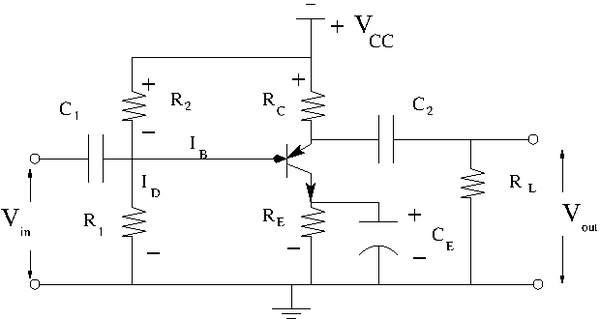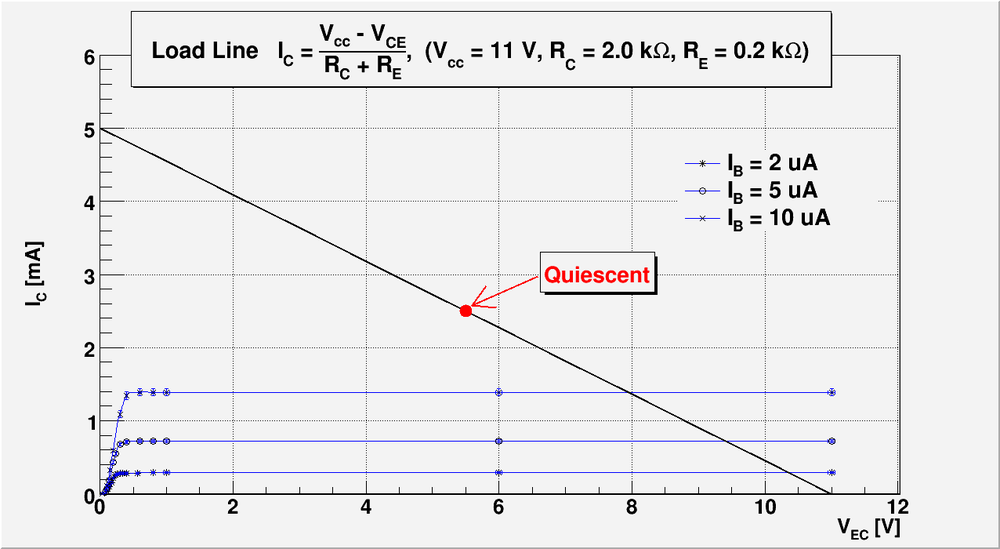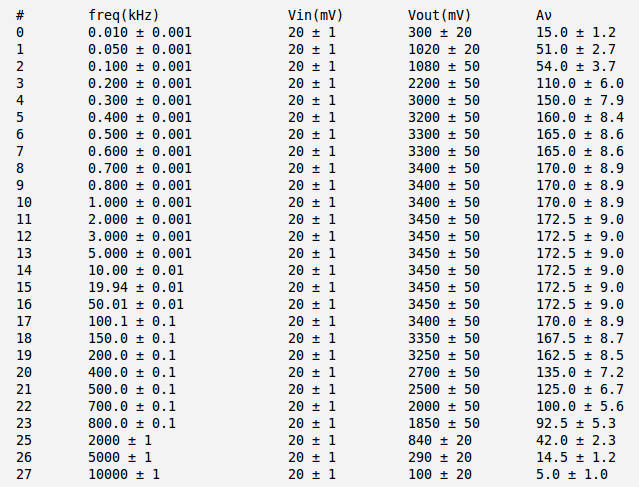Difference between revisions of "Lab 14 RS"
| Line 35: | Line 35: | ||
| − | My reported values of <math>\beta</math> in lab report #13 was <math>\beta \approx 150</math>. But this because we have used the approximation <math>V_E \approx 0</math> because small resistor value <math>R_E = 100\ \Omega</math> was used. If we will do the accurate calculation of <math>\beta</math> based on my lab report #13 I will end up with value: | + | My reported values of <math>\beta</math> in lab report #13 was <math>\beta \approx 150</math>. But this because we have used the approximation <math>V_E \approx 0</math> because small resistor value <math>R_E = 100\ \Omega</math> was used. |
| + | |||
| + | If we will do the accurate calculation of <math>\beta</math> based on my lab report #13 (I mean if we include the measured values of <math>V_E</math> in my calculation of <math>I_B</math> like <math>I_B = \frac{V_{bb}-V_{BE}-V_E}{R_B}</math>) I will end up with value: | ||
<math>\beta \approx 170</math> | <math>\beta \approx 170</math> | ||
Revision as of 03:13, 22 March 2011
The Common Emitter Amplifier
Circuit
Construct the common emitter amplifier circuit below according to your type of emitter.
Calculate all the R and C values to use in the circuit such that
- a. Try and
- b. mA DC with no input signal
- c. V
- d. to prevent burnout
- e.
- f. mA
Let's , and .
The load line equation becomes:
Draw a load line using the -vs- from the previous lab 13. Record the value of or .
On the plot below I overlay the output transistor lines (from the previous lab report #13) and the Load Line calculated above.
My reported values of in lab report #13 was . But this because we have used the approximation because small resistor value was used.
If we will do the accurate calculation of based on my lab report #13 (I mean if we include the measured values of in my calculation of like ) I will end up with value:
Set a DC operating point so it will amplify the input pulse given to you. Some of you will have sinusoidal pulses others will have positive or negative only pulses.
I will set up my operating point in the middle of the load line:
, .
Let's calculate all bias voltage needed to set up this operating point. Because the knowing of and is very important for this calculation I did the preliminary set up to measure this quantities. They are the only parameters which depends from transistor. I was able to find:
Now
To set up the operating point above we need to set up .
We have:
.
To get operating point independent of the transistor base current we want
Let's
So
And we can find from Kirchhoff Voltage Low:
.
and Kirchhoff Current Low:
So
I tried to adjust my calculation by varying the fee parameters and to get good values for resistors I can easily to set up.
Measure all DC voltages in the circuit and compare with the predicted values.(10 pnts)
My predicted DC voltages are: (from the calculation above):
My measured DC voltages are:
Here is very important to set up all resistor values as close as possible to my assumed values.
After many tries and errors I was able to end up with the following values of my resistors:
And my measurements of DC voltages looks like:
All my measurements are in agreement with each other within experimental errors.
I mean here that , and ,
Also all my predicted values are in agreement with my measured DC voltage values except of the fact that my measured instead of as I initially assumed. That gives me the correspond corrections to . But if I will consider only the one significant sign all my predicted and measured DC voltage values are in total agreement.
Below are my current measurements which I did using millivoltmeter and which are also in agreement with each other and with all my previous calculation:
Measure the voltage gain as a function of frequency and compare to the theoretical value.(10 pnts)
Measure and at about 1 kHz and compare to the theoretical value.(10 pnts)
How do you do this? Add resistor in front of which you vary to determine and then do a similar thing for except the variable reistor goes from to ground.
Measure and as a function of frequency with removed.(10 pnts)
Questions
- Why does a flat load line produce a high voltage gain and a steep load line a high current gain? (10 pnts)
- What would be a good operating point an an common emitter amplifier used to amplify negative pulses?(10 pnts)
- What will the values of , , and be if the transistor burns out resulting in infinite resistance. Check with measurement.(10 pnts)
- What will the values of , , and be if the transistor burns out resulting in near ZERO resistance (ie short). Check with measurement.(10 pnts)
- Predict the change in the value of if is increased from 10 to 50 (10 pnts)
- Sketch the AC equivalent circuit of the common emitter amplifier.(10 pnts)
Go Back to All Lab Reports Forest_Electronic_Instrumentation_and_Measurement


